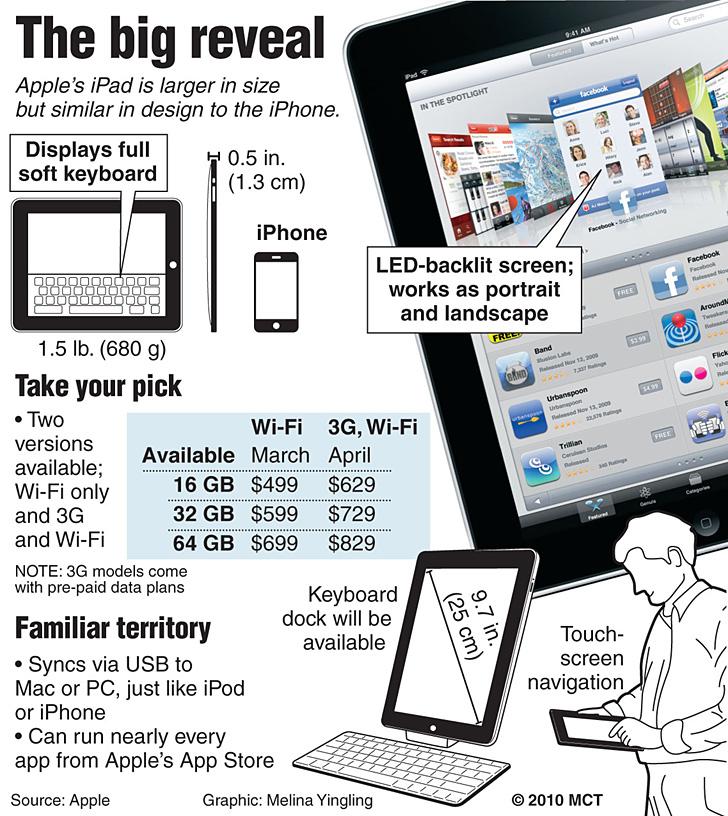By Kunal Goel ’12
THE ROUNDUP
This is not a genuine laptop, nor is this is a supersized iPhone.
The Apple iPad is completely new to the precipitous platform where all great technological advances have stood.

To be released in March, Apple Senior Vice President Phil Schiller claims that the iPad “is going to change the way we do the things we do, everyday.”
But what exactly does it bring to the table?
Beginning with the physical device itself, Apple states the iPad’s main structure is a single piece of 9.7 inch multi-touch glass accompanied by an omnipotent home button. Additional features include an LED-backlit touch-screen display, built-in speaker, 10 full hours of battery life and an incredibly accurate multi-touch layer.
When using an iPad, one has the option of viewing the device in either a landscape or portrait orientation, a luxury granted by the built in accelerometer.
When the user clicks on a text field, a virtual keyboard proportional to the size of a physical keyboard will occupy the bottom half of the screen, allowing easy access.
How is this relevant to the busy Brophy student?
According to Apple, the iPad houses an astonishingly quick Wi-Fi powered web browser, a world-class email client, crisp video, picture and music playback, and of course the beautiful, redesigned 140,000 apps.
Think of it as a slimmed down Toshiba Tablet, without the reimages.
Straight from the built in Web store, a consumer can buy three new apps that are unique to the iPad and move more towards the Microsoft Office style of things. “Keynote” allows the user to create custom slideshows with animations and effects, “Pages” can create Word-like documents through pre-designed layouts and format tools, and finally “Numbers” features the ability to create spreadsheets consisting of various tables, charts and graphs.
The iPad does not have the ability to run multiple apps at the same time. This means the user cannot listen to music on Pandora while reading through an e-mail document, playing a game or browsing the Web.
The iPad also does not support Flash player due to a potential security risk, as argued by Apple. This implies that Web sites such as Hulu, ESPN and various online Flash games are obsolete, unless a specified app is created. A final dent in the iPad’s image is the absence of a USB port, which prohibits the use of flash drives or devices such as digital cameras.
To satisfy the traditional computer layout, Apple has built a separate Keyboard Dock, which allows for a constant charge to the device as well as equipping a full-size physical keyboard. In addition, the iPad Case accessory is meant as a use of protection while also providing a smooth, portfolio-like feel towards the slim, 1.5 pound iPad tablet.
The Apple iPad is to be sold in three different models and prices: the 16 GB at $499, the 32 GB at $599, and the 64 GB at $699. Later in April, Apple will premiere a 3G version of the iPad for an additional $130 and a pre-paid AT&T data plan, which will give rise to GPS Navigation and constant internet access.















